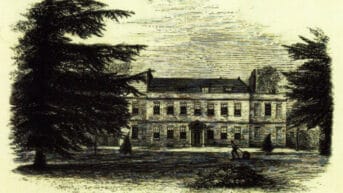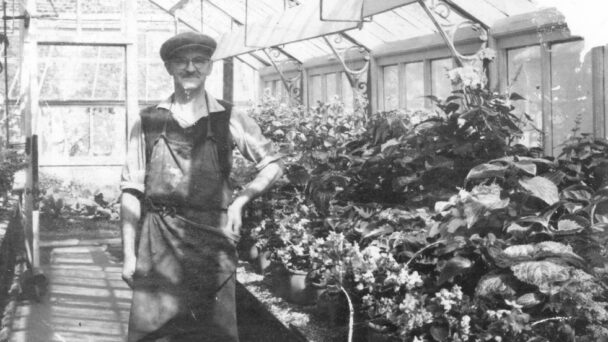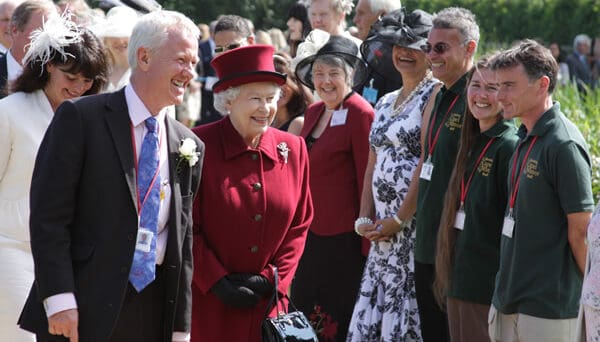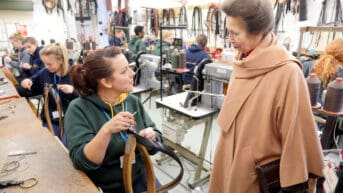

Who we are
Nestled in Enfield, North London, Capel Manor is a beautiful Georgian house set amongst 30 acres of picturesque gardens.
Boasting a rich history that dates back to the 13th century, the estate is home to 40 colourful gardens, a mini zoo, café and Capel Manor College’s Enfield Campus.
History timeline
The history of Capel Manor charts back to the late 12th century where a chain of complex events and passing of ownership has contributed to the estate as it stands today, as both Capel Manor Gardens and Capel Manor College.

1275 – The land, then known as ‘the Manor of Honeylands and Pentriches, alias Capels’, was held by Ellis of Honeyland. There is evidence of a manor house at this time but the one you see today did not exist until the 1750s. Instead, it is thought that the original house was located on the site of Capel Manor Primary School.
1486 – Sir William Capel became the owner of this first house, which was in the family until the 16th century when Sir Giles, Sir Henry and Edward Capel surrendered it to the crown.
1562 – Queen Elizabeth I gave the house to William Thorne and it then passed through several hands including the Avery family. Samuel and Mariabella Avery arrived in Enfield in 1642 and then in 1653, Capels’ Manor passed over to their youngest son, William Avery, on his father’s death.


1745 – The land passed to Robert Jacomb who demolished the original manor house and built a new manor adjacent to North Field, which he called Capel House.
1750 – A second house was built on the estate, which we know today as Capel Manor.
1793 – Jacomb conveyed the whole estate including two manor houses to William Hart and 10 years later, it passed to Rawson Hart Boddam. The Boddams were a wealthy and well-connected Enfield family with farms in Waltham Cross and on the Theobalds Estate. Boddam decided to demolish Jacomb’s earlier manor house then known as Capel House in favour of the second house, and so took the name Capel House to his new abode, the present Capel Manor in which the family lived.


1840 – Capel Manor became the family home for James Warren, a successful tea planter. After his death, the house stayed in the family going to James, his nephew, who was a pillar of the community.
1932 – Colonel Sydney Medcalf moved in until his death in 1958. He was the last private owner of Capel Manor; he had a passion for horticulture and the breeding of Clydesdale horses. Capel Manor became a National Centre for Clydesdale horse breeding.
1958 – Colonel Medcalf died and left Capel Manor in Trust to the Incorporated Society of Accountants.


1960 – The gardens were maintained by only two gardeners and in 1963; 12 acres of land and stables were leased to the Horses and Ponies Protection Association.
1963 – The estate’s gardens and outbuildings became increasingly neglected before being saved by local horticulturist Frances Perry, who campaigned for Capel Manor to become a horticultural college with gardens for public use.
1968 – Peter Robinson was appointed as the first Principal. The first 15 students joined the “Capel Manor Centre for Horticultural Education”.


1981 – Victorian glasshouses were restored, increasing the College’s self-sufficiency for plant production and reducing its carbon footprint.
1991 – Margaret Thatcher opened the National Gardening Centre, a permanent collection of show gardens including the Japanese Garden designed by Dr. David Hessayon.
2010 – Her Majesty Queen Elizabeth II opened the Old Manor House Garden.


2015 – The Princess Royal College of Animal Management and Saddlery was opened by HRH Princess Anne.
2016 – Roger McClure became Chair of Governors.
2018 – Staff and students won Gold at the RHS Chelsea Flower Show and Gold at the Ideal Home Show.
2018 – The Marchioness of Salisbury became Patron and President.
2018 – Capel Manor College celebrated its 50th anniversary.
2019 – Capel Manor College’s students, apprentices and staff, designed and built the world’s largest show garden at The Game Fair.
